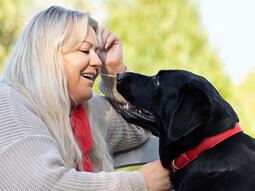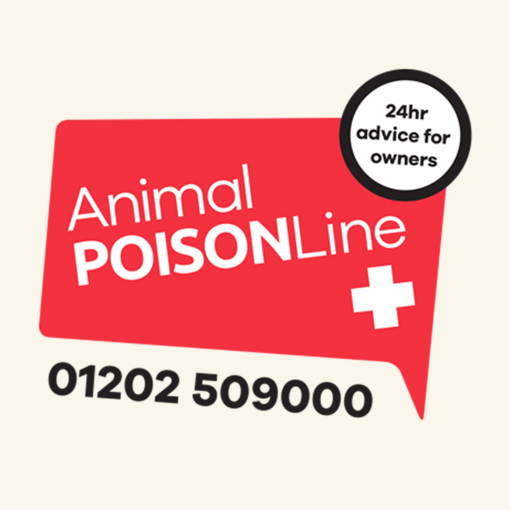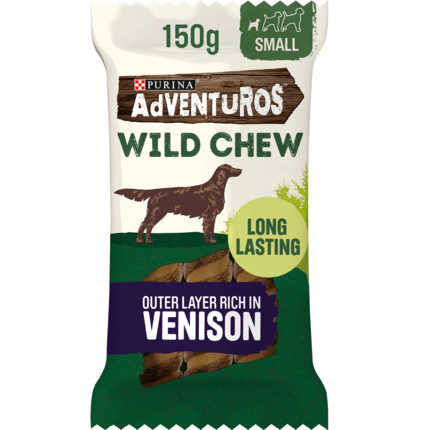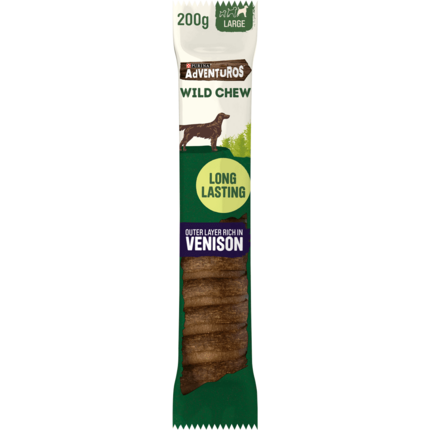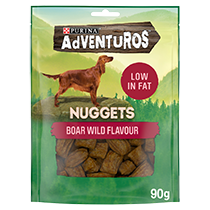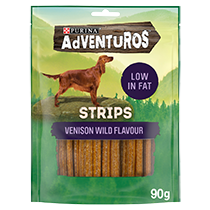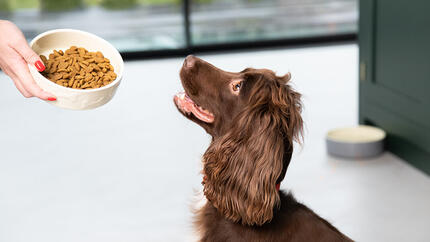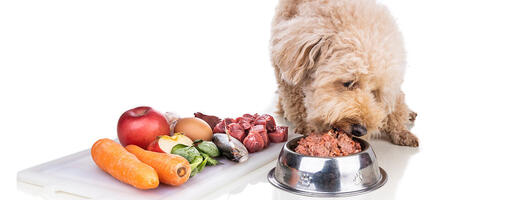
Interest in raw diets for dogs has been on the rise in recent years, but are these diets actually healthier for our dogs or do the risks outweigh the benefits? Find out all you need to know about feeding dogs raw food in our guide.
As we search for the best possible sources of nutrition for our pets, a huge number of new diets are cropping up, including everything from tailor-made plans to vegan food and fresh-frozen diets. Of all the current trends, there’s one that’s particularly debated amongst nutritionists, vets and owners alike – raw food diets.
Keep reading to find out if these diets are safe and if dogs can actually eat raw meat and/ or raw fish.
What is a raw diet for dogs?
First things first, you’ll likely be wondering what a raw dog food diet actually is. Put simply, it’s an uncooked diet which will often consist of the following:
- Muscle meat: The primary source of protein.
- Bones: Provide essential nutrients and aid in dental health.
- Organs: Offer a variety of vitamins and minerals.
- Raw eggs: A good source of protein and essential fatty acids.
- Dairy: Provides calcium and other nutrients.
- Fruits and vegetables: Offer fibre, vitamins, and minerals.
Raw diets have been fed to some working dogs such as racing greyhounds and sled dogs for years, with interest in these diets for pets rising from the early 90s when the first book on the BARF Diet (Biologically Appropriate Raw Food) was written by Australian vet Dr Ian Billinghurst.
The concept behind the diet is that dogs originally ate raw food before domestication and that returning them to this type of food will improve their health and longevity. However feeding dogs raw food is often a cause of concern to vets as there’s been little research done on the safety and benefits and many believe that the risks greatly outweigh the positives.
Potential benefits of raw diets for dogs
Raw food diets for dogs are still undergoing research and while there have been some studies done on the pros and cons, there is no definitive answer. Some studies have suggested that stool quality is subjectively better on raw diets while others believe that raw feeding is associated with a shinier coat, healthier skin, cleaner teeth, improved energy levels and better digestive health, but as yet there isn’t any conclusive evidence for these benefits.
Potential risks of feeding your dog raw food
There are a number of potential risks concerning raw diets for dogs, including:
- Raw meat contains pathogens such as bacteria and parasites which can be a threat to both canine and human health. There’s also a concern that some of these bacteria may be resistant to antimicrobials, and feeding raw diets could help spread antibiotic resistant bacteria.
- Many raw diets aren’t properly formulated or balanced, meaning they can lead to health problems if fed for an extended period. Home-prepared diets are very difficult to get right in terms of nutritional balance without the help of a qualified pet nutritionist, and few commercial raw diets have been evaluated in feeding trials.
- Raw diets often contain bones which can cause choking, broken teeth and damage or obstruction to the digestive tract.
- These diets are often expensive when compared to other dog foods, despite often being lower in nutritional quality.
Can dogs eat raw meat?
In theory, yes, they can eat it, but the question is more about whether they should. Dogs can digest meat in most forms but there are a large number of risks that come with a raw diet. For these reasons, we recommend that you do not feed your dog raw meat.
We advise against feeding dogs a raw chicken diet because of the risk of contamination with bacteria such as Salmonella. If you want to feed your dog chicken, we recommend that you cook it first. Make sure that the bones are all removed too.
Again, due to the potential health risks, we advise against feeding raw beef to dogs. Cooked beef is appropriate for dogs to enjoy as part of a balanced diet, but when fed raw there’s the risk of bacterial contamination.
Raw pork should never be fed to your dog. This is due to the risk of infection with the parasite Trichinella spiralis. Pork meat can contain the larvae of this parasite, which can then cause an infection known as trichinosis in dogs.
No, dogs shouldn’t eat raw fish. It carries intestinal parasites and fish bones are very dangerous when consumed. If you want to give your dog salmon, make sure it is fully cooked without any added spices.
Much like beef, lamb can be a healthy source of protein when cooked, but there’s a risk of bacterial contamination when fed raw, and this can lead to gastrointestinal problems.
Is a raw food diet right for my dog?
If you’re thinking about feeding raw, we’d advise talking through the risks and benefits with your vet and making an informed decision. If you opt for a home-prepared diet, it’s vital to formulate the plan with the help and support of your veterinarian or nutritionist.
Transitioning to a Raw Diet
If you've decided to transition your dog to a raw food diet, it's important to do so gradually to minimise any digestive upset. Here's a general guideline:
- Consult with your veterinarian: Discuss the potential benefits and risks of a raw diet for your dog, especially if they have any underlying health conditions.
- Choose a reputable raw food source: Opt for a commercial raw food that is formulated by a qualified nutritionist.
- Start slowly: Gradually mix the raw food with your dog's current food over a period of 7-10 days. Begin with a small amount of raw food and gradually increase the proportion until your dog is eating the raw food exclusively.
- Monitor for any digestive issues: Watch for signs of diarrhoea, vomiting, or other digestive problems during the transition. If you notice any adverse reactions, consult your veterinarian.
- Ensure proper supplementation: Some raw diets may require additional supplements to provide essential nutrients. Consult with your veterinarian to determine if your dog needs any supplements.
Remember, transitioning to a raw diet is a significant change for your dog. It's important to monitor their health closely and adjust as needed.
Alternative to Raw Diets
While raw diets have gained popularity, there are many other high-quality options available for feeding your dog:
- Commercial high-quality dog food: Look for reputable brands like Purina, which offer carefully formulated diets with complete and balanced nutrition. These diets are designed to meet your dog's specific needs and provide a convenient and healthy feeding option.
- Homemade cooked diets: If you prefer to prepare your dog's food at home, consult with a veterinarian or pet nutritionist to ensure it is balanced and provides adequate nutrition.
- Fresh-frozen dog food: These diets offer the convenience of pre-prepared meals while providing fresh, high-quality ingredients.
When choosing an alternative to a raw diet, prioritise the following:
- Quality ingredients: Look for foods that use whole, natural ingredients and avoid those with excessive fillers or artificial additives.
- Nutritional balance: Ensure the food provides a complete and balanced diet, including protein, carbohydrates, fats, vitamins, and minerals.
- Age-appropriate formulas: Select a food that is appropriate for your dog's age and life stage.
Figuring out the exact ingredients and quantities to make a properly balanced diet is very difficult, but if you don’t get the balance right, it can be detrimental to your dog’s health. At Purina, our team of vets and nutritionists believe in putting your pet’s health first and this is done best by feeding a complete, balanced diet prepared by pet nutritionists that contains all the ingredients necessary for your dog to live a long, happy and healthy life.
Now you’ve learnt all you need to know about raw feeding dogs – looking for more feeding information? Check out our guide on the risks and benefits of homemade dog food, next.

